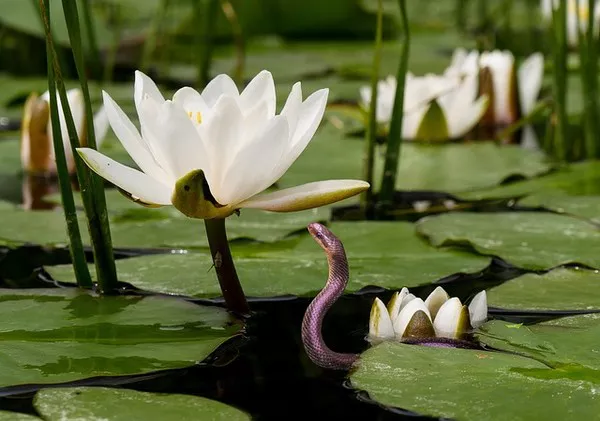In the vast tapestry of nature’s beauty, the flower emerges as an exquisite emblem of profound emotions and sentiments. Among its many representations, one of the most poignant and universally cherished is its embodiment of hope. Throughout cultures and history, certain flowers have become synonymous with the concept of hope, evoking a sense of optimism, renewal, and the promise of brighter days ahead. This article delves into the symbolic significance of the flower as a representation of hope, exploring its historical roots, cultural associations, and the intrinsic qualities that make it a powerful symbol of human resilience.
Historical Roots of Floral Symbolism
The use of flowers as symbolic representations dates back to ancient civilizations, where their ephemeral beauty and transformative lifecycle captured the imagination of poets, artists, and philosophers. The association between flowers and hope can be traced to various historical contexts, such as ancient mythology and religious narratives.
In Greek mythology, the lotus flower emerged as a potent symbol of hope, embodying the promise of rebirth and renewal. The lotus, rooted in muddy waters, gracefully rises above the surface to bloom, representing the human spirit’s ability to overcome adversity and achieve enlightenment. Similarly, in Hinduism, the lotus flower symbolizes purity and spiritual growth, reflecting the journey towards self-realization and the aspiration for a brighter future.
See Also: The Language of Love: Flowers That Symbolize Deep Affection
Cultural Associations of Hopeful Flowers
The universal appeal of hopeful flowers transcends geographical and cultural boundaries. Across different societies, specific flowers have become synonymous with hope due to their unique qualities and visual allure.
Cherry blossoms, or sakura, hold immense significance in Japanese culture, where they represent the transience of life and the fleeting nature of beauty. Despite the ephemeral nature of their bloom, cherry blossoms symbolize the renewal of hope and the promise of a fresh start. The annual Hanami festival in Japan celebrates the cherry blossom season, bringing communities together to appreciate the delicate petals and reflect on the cyclical nature of life.
In Christianity, the white lily embodies hope through its connection to the story of the Annunciation, where the Angel Gabriel announced to the Virgin Mary that she would bear the son of God. The lily’s pure and immaculate appearance signifies the hope brought by the promise of Christ’s birth, signifying a message of redemption and salvation.
The poppy flower, with its vibrant red petals, has come to symbolize hope in various contexts, including remembrance and recovery. The red poppy is often associated with the remembrance of fallen soldiers, providing solace and hope for a peaceful future. Additionally, the poppy’s use in medicinal applications, such as the production of opium-derived painkillers, underscores its association with healing and recovery.
See Also: A Blossoming Dawn: Seeking Flowers Symbolizing New Beginnings
Intrinsic Qualities: Hope in Bloom
The flower’s symbolic representation of hope is rooted in its intrinsic qualities, which mirror the human experience of perseverance, transformation, and the pursuit of light amidst darkness.
The act of blooming itself is a powerful metaphor for hope. Just as a flower emerges from a bud to reveal its full splendor, hope blossoms in the human heart, pushing through challenges and adversity to reveal the potential for growth and renewal. The gradual unfolding of petals mirrors the incremental nature of hope, as it gradually spreads its influence and inspires optimism.
The vibrant colors of flowers contribute significantly to their symbolic representation of hope. Bright and cheerful hues, such as yellow and orange, evoke feelings of joy and positivity. Sunflowers, for instance, are revered for their sun-like appearance and their ability to turn towards the sun as it moves across the sky. This dynamic behavior symbolizes the pursuit of light and the unwavering hope that guides individuals through life’s twists and turns.
Furthermore, the fragility of flowers serves as a poignant reminder of the delicate balance between hope and vulnerability. Just as a flower’s petals can be easily bruised or damaged, hope can be fragile in the face of adversity. However, like a resilient flower that endures storms and harsh weather, hope can withstand challenges and emerge stronger, serving as a beacon of strength and optimism.
See Also: A Blooming Serenity: The Symbolism of Flowers for Peace
Conclusion
The flower’s representation of hope is a testament to the profound connection between nature and the human spirit. Throughout history and across cultures, specific flowers have been cherished for their ability to encapsulate the essence of hope through their transformative beauty, vibrant colors, and symbolic resonance. From the lotus of ancient mythology to the cherry blossoms of Japan and the white lily of Christianity, these blooms serve as reminders of humanity’s enduring capacity for resilience, renewal, and the unwavering pursuit of a brighter tomorrow.
As we gaze upon the petals of a blooming flower, let us be reminded of the eternal message it carries – that amidst life’s challenges, hope remains a steadfast companion, guiding us towards the promise of a better future. Just as the flower’s bloom is an exquisite masterpiece crafted by nature, hope is a masterpiece of the human spirit, radiating light and warmth even in the darkest of times.


